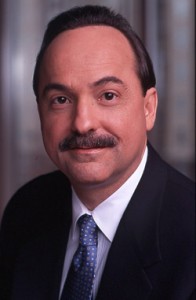CTIA: Mobile growth can't be stopped; Can technology keep up?

![]() Here at the Las Vegas Convention Center, the CTIA Wireless show doesn't take up nearly as much space as the annual Consumer Electronics Show held here every year. But the chatter here is that the show - which is building around the theme of Mobile Life - is a hotter show.
Here at the Las Vegas Convention Center, the CTIA Wireless show doesn't take up nearly as much space as the annual Consumer Electronics Show held here every year. But the chatter here is that the show - which is building around the theme of Mobile Life - is a hotter show.

AT&T Mobility CEO and chairman of the CTIA Ralph de la Vega kicked off the show with a speech that gave a glimpse into what's at stake for the wireless industry - the usage, the investments, the changing technology - as the industry continues to grow. We're at a critical point in the industry, he said, and the U.S. industry itself - a "virtuous cycle of investment and innovation," de la Vega said - will be making important decisions today that affect the nation's role around the globe.
De la Vega notes that it will take a big investment in mobile broadband over the coming years as the appetite for it only becomes greater. By 2014, the U.S. alone is expected to have 86 million devices - a 10x increase - and by 2020, it is believed that mobile devices will be the primary Internet device for most people in the world.
Are we ready for that sort of demand? The short answer is no.
Consider that we're already doing a lot to meet those needs, de la Vega said, but there's more that needs to be done. Yes, the FCC has proposed freeing up spectrum, but that will take years to deploy. Yes, complimentary technologies such as WiFi can take some of the pressure off of the mobile broadband networks. Femtocell technologies can also help.
But it still may not be enough. De la Vega called on those working in the mobile industry to work together as an ecosystem to efficiently use the spectrum available. There's a lot of work to be done - but the industry has little choice. The demand will continue to grow and users will expect a good experience with every turn.